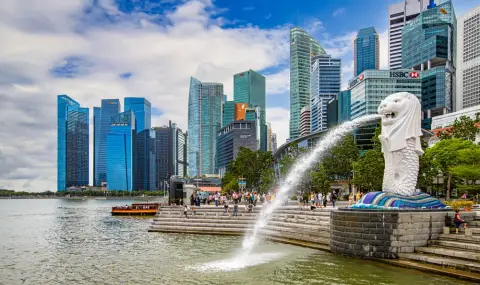The city-state of Singapore is colorful , multicultural, green and rich, six million people live there. Singapore is an international financial and commercial center. It shines with purity, it is full of parks and fountains.
But the fifth richest country in the world is also one of the poorest in terms of water - Singapore has almost no natural water sources. However, it manages to cover the water needs of the constantly growing population and the economy - in recent decades the country has become an example of the rational use of water resources.
„Nothing they do is magic," American ecologist Peter Gleik told DV. He formulated Singapore's successful approach as “soft", i.e. without such an infrastructure that is at the expense of nature. The solution lies in the efficient and careful utilization of water, in saving it and in the search for new sources.
Water, War and Action Plan
Singapore has a long history of water scarcity - since British colonial times and the Allied battles against fascist Japan during World War II, clean water has always been a precious resource. Restrictive measures for water consumption have often been introduced. Independence in 1965 did not end the water crisis, but after that Singapore took matters into its own hands.
„Even with the declaration of independence, plans began to be made on how by 2060 the country would also win its water, food and energy independence,", Sessia Tortayada, professor of ecology at the University of Glasgow, explained to DV.< /p>
The then government developed a plan based on four pillars to provide the necessary quantities of water: imported, from seawater desalination plants, from local water sources and through a water processing method called “NEWater".< /p>
Pillars of Singaporean Success
Singapore has the ability to import water from nearby Malaysia, from where it is piped in enough to cover half of the city-state's needs. However, Malaysia constantly threatens to cut off supplies and raise prices, which causes constant tension and in 2002 almost led to a military conflict. Therefore, Singapore wants to end imports by 2061 and is betting on other water sources, the development of which is going on intensively.
An important role in this regard is played by the desalination of seawater - in this way 25 percent of the quantities needed on the island are provided. Some of the extremely modern installations are underground, and on the surface they are landscaped and resemble parks. The set goal is for the capacities to cover 30 percent of water needs by 2060.
In the name of economy, two-thirds of Singapore's land area is used to collect rainwater. Water from roofs is drained into a network of rivers, canals and reservoirs. They also serve as flood protection - if reservoirs and canals overflow, underground cisterns capture the water, which is then processed for drinking purposes. And in this regard, there are plans - by 2060, 90 percent of the country's territory will be used to collect rainwater. And the population is provided with a number of incentives for the installation of devices that allow saving water.
In addition, Singapore has one big advantage compared to other countries - there is almost no agriculture that uses and pollutes water.
And waste water is used
„In Singapore, all wastewater is collected, processed and reused," water expert John Church from the United Nations Water Agency, UN Water, told DV. Singapore has built a 206 km sewage treatment tunnel worth ten billion dollars, through which sewage is directed to state-of-the-art treatment plants.
Singapore, meanwhile, recycles 30 percent of its water needs and intends to increase that share to 55 percent in the 2060s. The predominant part of this water is used by industry, but a small part is also for the provision of drinking water. There are no doubts about the purity of this water - it is even used for the production of chips.
Author: Tim Schauenberg
